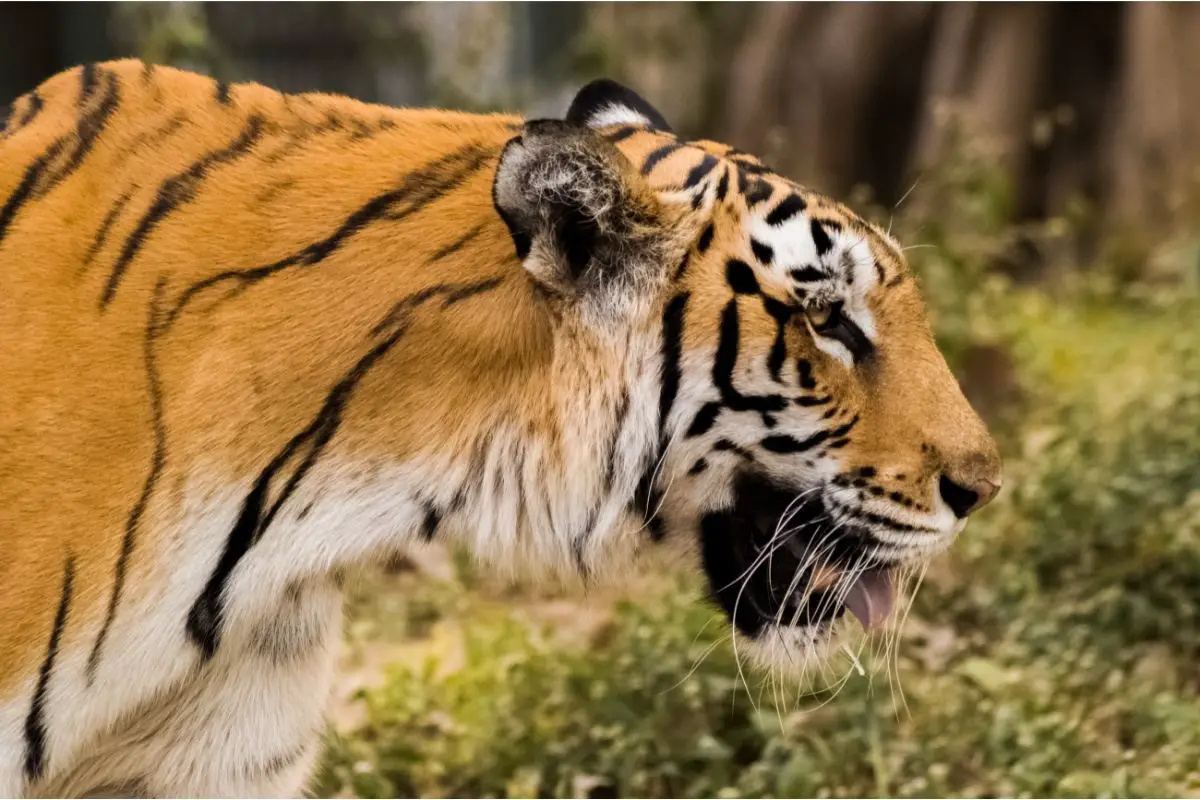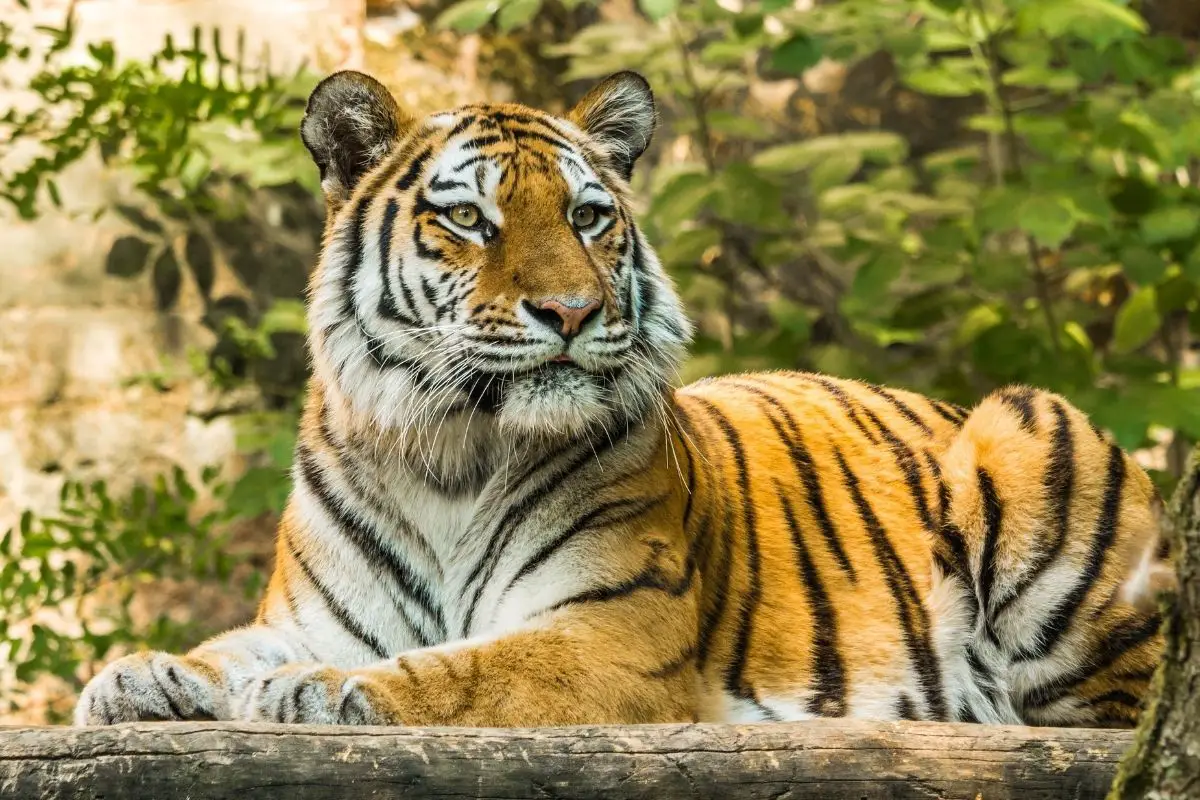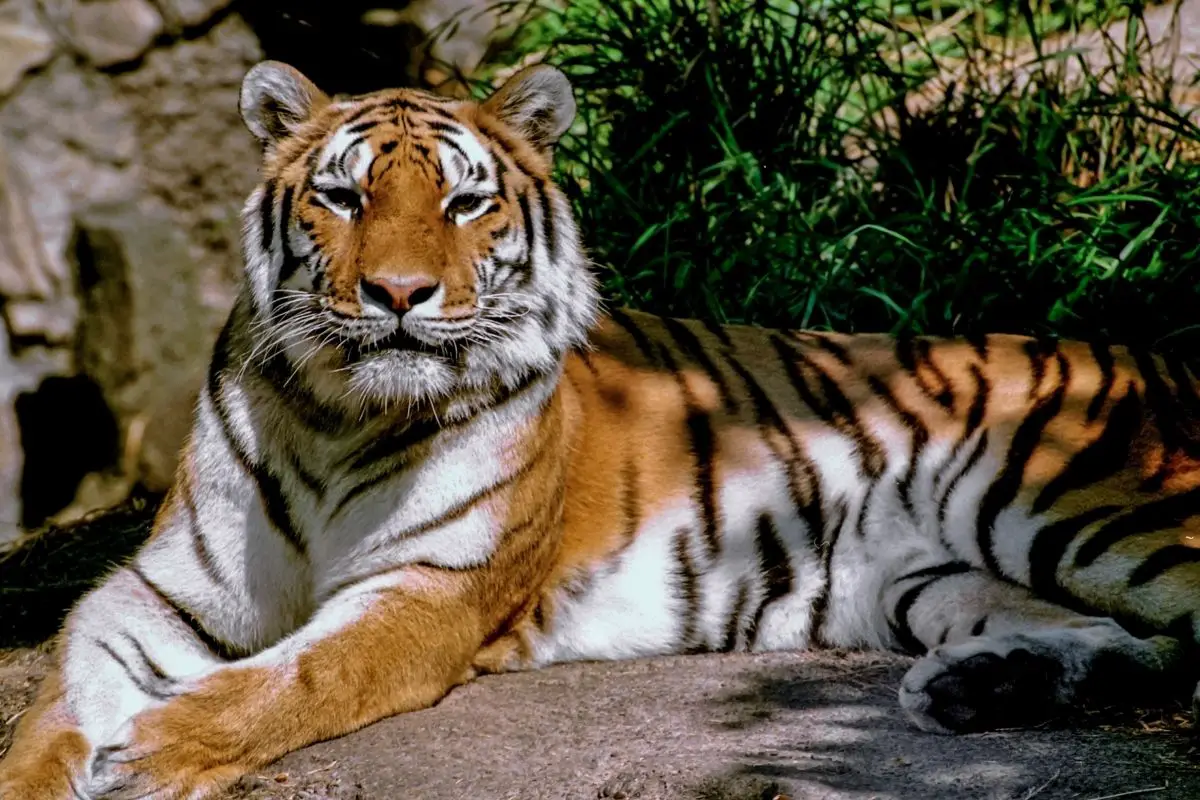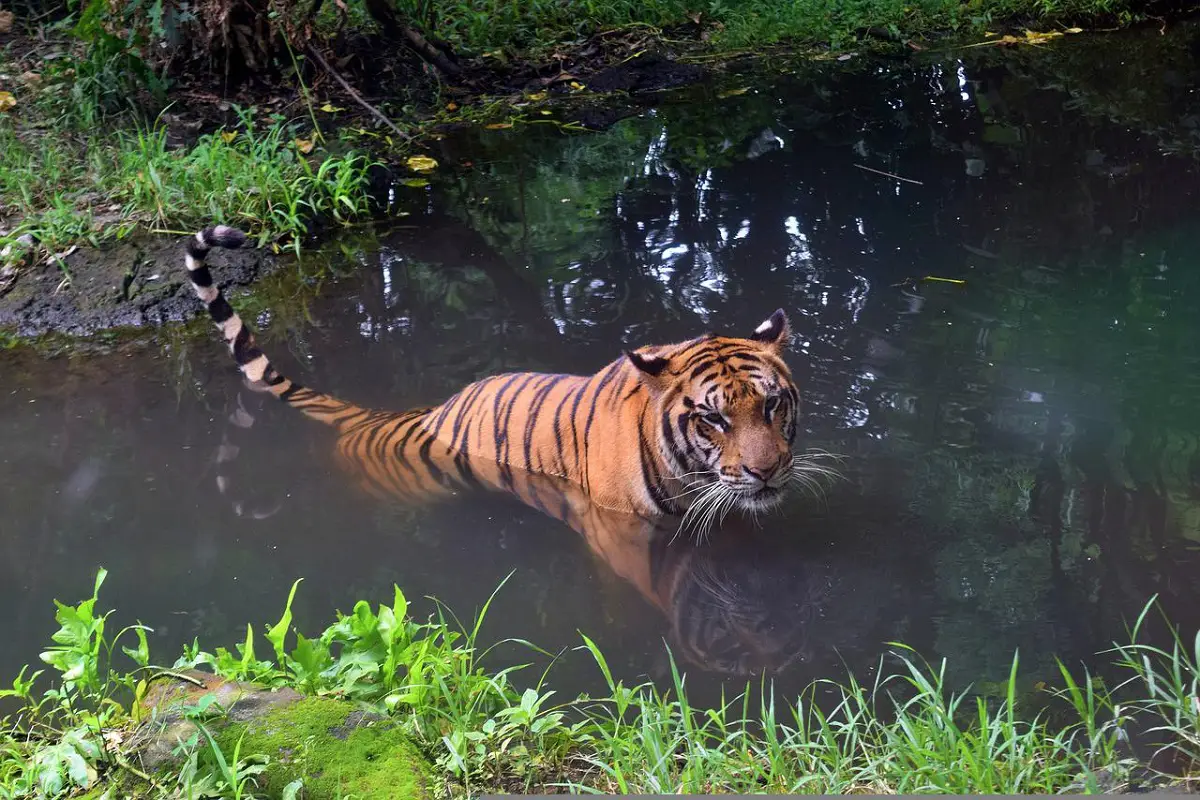Although their population is decreasing all over the world, you can find tigers in various Asian countries, including China, Thailand, and even as far as Eastern Russia and the Indonesian Island of Sumatra.

But when asked where you are most likely to find tigers, your first answer would probably be India.
But when did tigers first migrate to India and why are they so important? Read on to find out all you need to know about this magnificent wild cat.
What Is An Indian Tiger?
As the name suggests, the Indian or Bengal Tiger is mainly found in India, Bangladesh, Bhutan, and Nepal.
Tigers are opportunistic predators, primarily feeding on wild pigs, hare, langur, peafowl and other jungle fowl, and occasionally larger prey such as elephant calves and even wild buffalo.
Tigers are famously large wild cats, and while this makes them very powerful this does limit their climbing abilities.
However, they love the water and are fantastic swimmers. In the Sunderbans, they are known for swimming between the islands.
When Did Tigers Come To India?
Truthfully, it is hard to pin down when tigers came to India as there is little evidence regarding their arrival in the subcontinent.
However, this hasn’t stopped experts from putting forward some approximate time periods for when tigers migrated to India.
Tigers and other large cats are believed to have evolved from a common ancestor around five million years ago.
This common ancestor is believed to resemble the jaguars and leopards we see in the wild today.
Studies have previously concluded that tigers evolved near the region of South China and it was from there that they migrated to India.
Analyzing models of climate and habitats, scientists believe that tigers occupied most of the subcontinent around 12,000 years ago.
Where Can You Find Tigers In India?
Tigers can be found in a wide range of habitats in India, like evergreen forests, grasslands, mangrove swamps, and tropical and subtropical forests.
Tigers have also been recently spotted in the temperate forests of the Himalayas as well.
To better protect tiger habitats, a lot of forests in India have been marked as Tiger reserves, sanctuaries, and national parks.
They are also referred to as protected areas. Currently, there are over 50 WWF tiger reserves in India.
Why Are Tigers So Important In India?
Tigers are an integral part of Indian culture.
Throughout history, the tiger has symbolized beauty, ferocity, power and magnificence, and has long been associated with valor and bravery.
In fact, hunting tigers was once seen to be a brave pursuit that kings and noblemen often engaged in.
The tiger is also an important animal in Hindu mythology, mainly because a tiger often accompanied the Goddess Durga, who used a tiger as a means of transportation!
But the tiger isn’t just culturally significant, it also plays a vital role in keeping the ecosystems in which they live healthy and diverse.
Tigers are apex predators, meaning they’re at the top of the food chain. A healthy amount of tigers in the forest is therefore an indicator of a healthy ecosystem.
Tigers are considered a Flagship and Umbrella species.
They are a flagship species because they are important for conservation, and they are an umbrella species because their conservation indirectly assists the conservation of other species.
However, activities like poaching threaten the delicate balance of their ecosystems.
Poaching reduces the population of tigers in the wild and places the wellbeing of other wild animals in the ecosystem at risk.
Are Tigers Endangered In India?

Under the IUCN Redlist of Threatened Species, tigers are considered endangered and the tiger population has been drastically declining all over the world.
At the start of the 20th century, it was believed that thousands of tigers existed in the wild all over the world, with a considerable number in India.
However, a survey conducted by WWF found that tiger’s historic range in India has diminished by 93%.
In the last decade alone, the tiger population in India has decreased by nearly half, which is a huge cause for concern.
Now, it is believed that tigers occupy less than 10% of their historic range.
There is hope however, as the population of tigers is steadily rising in India as well as Bhutan and Nepal.
But in other south-east Asian countries, the tiger population is still struggling to rise.
So why has the tiger population declined so much in India? Well, there are a few reasons, but one of the biggest factors is how the human population has grown.
Large areas where tigers once roamed are now being used for agricultural purposes and property development.
We also can’t underestimate the impact of tiger hunting, which until the mid 20th century was legal and people often hunted tigers for sport.
However, tiger hunting became illegal after the Wildlife Protection Act came into place in 1972.
Still, while tiger hunting is now illegal, disturbances to the tiger’s natural habitat such as mining, quarrying, and urbanization, as well as the ongoing problem of poaching, threatens the tiger’s future.
Bones and other tiger body parents are still used in Traditional Chinese Medicine, and their skins are also used to make Chubas (a traditional robe worn in Tibet).
This illegal market is one of the most serious threats to the tiger population in India.
Final Thoughts
While we can’t pin down an exact time when tigers migrated to India from South China, there is no doubting the impact tigers have had on Indian culture, history, and mythology, as well as the positive impact they have on the ecosystems which they inhabit.
This beautiful animal is iconic to India, and while many factors threaten the tiger’s future it is hard to imagine the mangrove swamps and tropical forests without them.
The conservation of tigers is challenging, but there is still hope. Animal conservation charities and the Indian government are working together to save tigers.
These interventions include restoring their habitat, reducing conflicts between humans and tigers, and stamping out the illegal poaching of these magnificent creatures, to ensure tigers don’t vanish from the wild forever.
- Bengal Cat vs Wild Bengal Tiger: Complete Comparison 2025 - October 31, 2025
- Complete Wild Cat Spotting Guide for Hikers 2025 - October 31, 2025
- Lynx vs Bobcat: Complete Field Identification Guide 2025 - October 30, 2025








